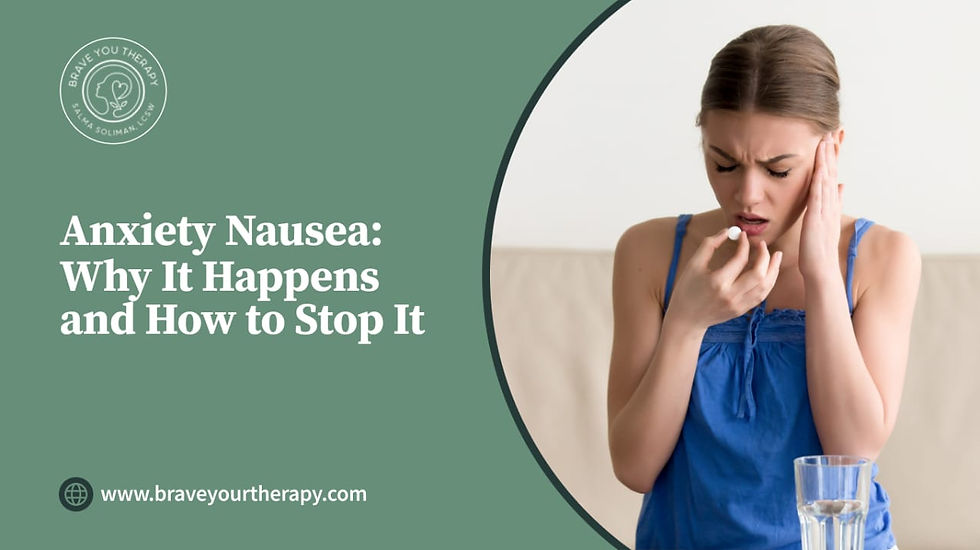Fun Mental Health Group Therapy Activities for Adults
- Salma Soliman
- 10 hours ago
- 2 min read

Sometimes the most powerful therapy moments happen when we’re laughing. I’ve seen a single activity dissolve tension in a group, help people connect instantly, and even bring out deep self-awareness in ways that feel natural rather than forced.
While I do run a really fun and engaging group called Improv Therapy, I also love weaving creativity into all kinds of group spaces. Sometimes that means showing clients that skill-building can be joyful and playful.
Why Fun Matters in Therapy
Play isn’t just for kids — it’s a powerful tool for adults, too. When we engage in something fun, we lower defenses, increase connection, and make space for vulnerability. For many people, especially in mental health settings, fun activities also offer a safe “rehearsal space” for trying new ways of thinking, feeling, and relating without the high stakes of daily life.
Fun fosters:
Connection – Laughter builds trust quickly.
Vulnerability – Play invites us to take small risks and be seen.
Skill retention – When skills are enjoyable to learn, we remember them better.
Types of Activities
Here are a few categories to work with:
Icebreakers – Gentle ways to get people interacting and comfortable.
Trust exercises – Activities that promote openness and empathy.
Creative expression – Art, writing, movement, or music.
Role-play – Practicing communication or coping skills in real time.
A Mindfulness Game from the COVID Era
When so much of mental health work went online during COVID, I thought about how to adapt group mindfulness activities to Zoom. One of my favorites — and one that many of my colleagues still use — is Live “Spot the Difference.”
Here’s how it works:
One group member volunteers to be observed. Everyone else takes 30 seconds to mindfully notice and describe what they see on that person’s screen — clothing, background objects, accessories — without judgment.
The volunteer turns off their camera for one minute and changes one small thing: moves a book, removes an earring, shifts a plant.
Cameras back on, and the group uses their observation skills to guess what changed.
It’s a coping skill disguised as a game — practicing observing, describing, and staying present — and it’s fun and engaging. It also makes mindfulness tangible and relatable.
Examples of Structured Activities
Mindfulness games – Like “Spot the Difference” or a sensory scavenger hunt.
Collaborative art projects – A shared collage or mural where everyone adds a piece.
Improv exercises – Simple “Yes, and…” games to practice listening and building on others’ ideas.
How Fun Fosters Healing
When people are having fun, they’re not overthinking. They’re in the moment, open to connection, and often surprised by what they learn about themselves. Fun bypasses the pressure to “get it right” and creates opportunities for authentic expression.
Closing Thoughts
Fun is not a distraction from “real” therapeutic work — it is therapeutic work. By inviting play, creativity, and joy into the room, we make it easier for people to engage, take risks, and discover new parts of themselves.
Whether it’s improv, mindfulness games, or a simple round of “Spot the Difference,” these activities remind us that healing can be serious and playful all at once.




Comments